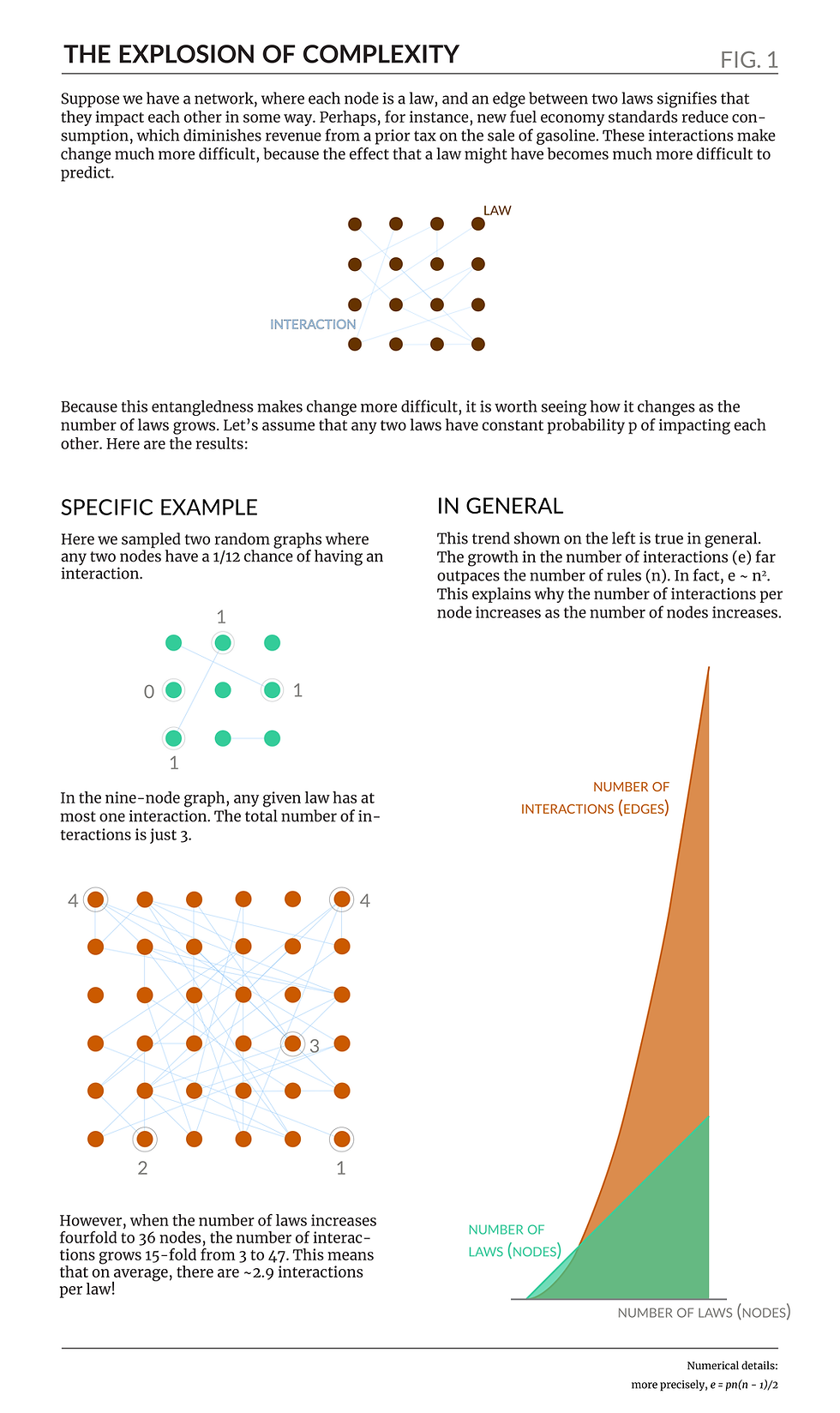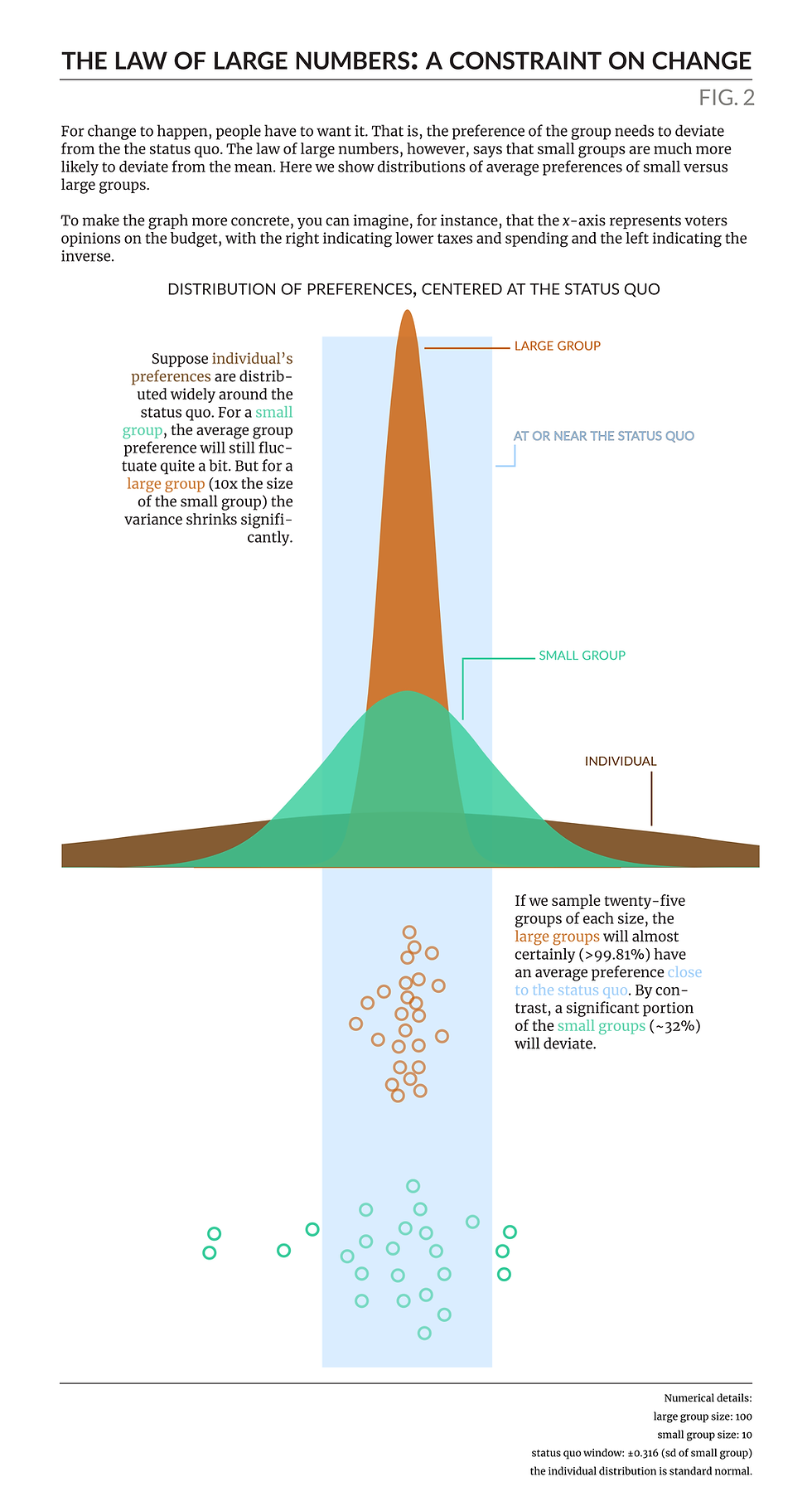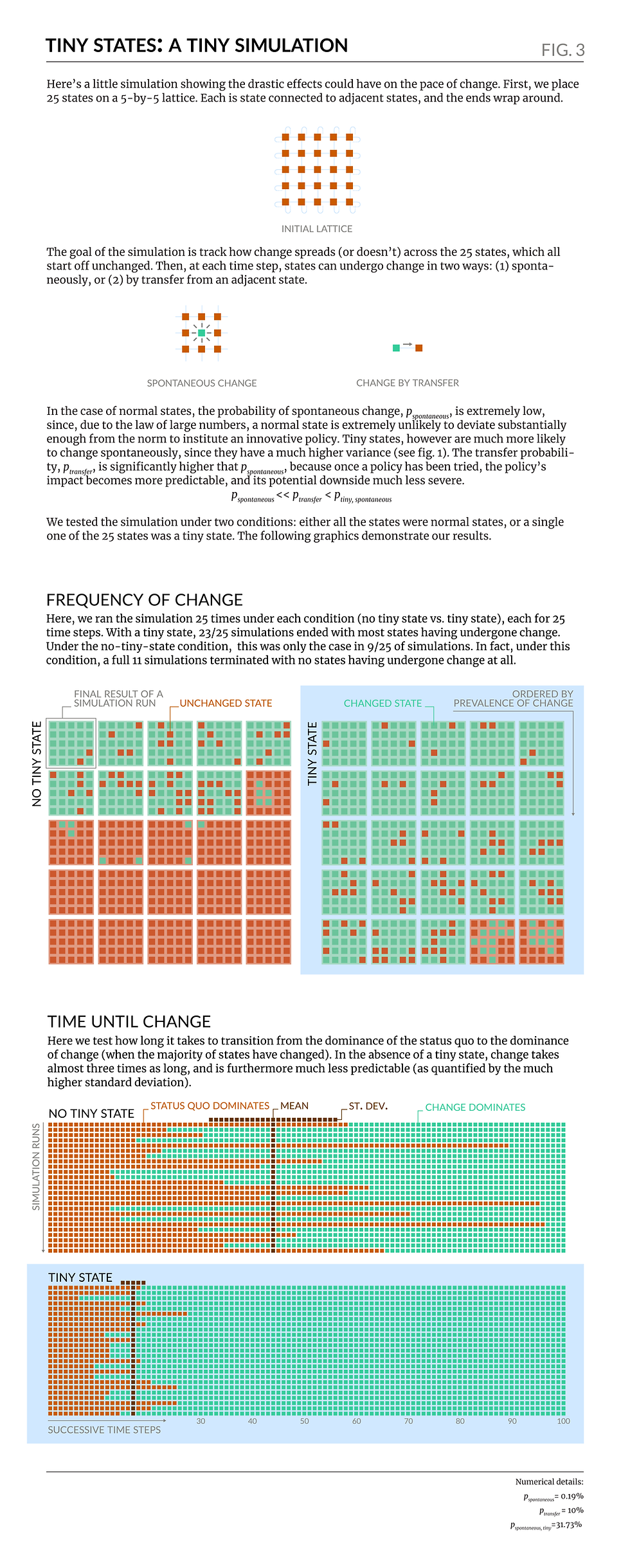Growing Seeds in Concrete: The Case for Tiny States
- Victor Odouard
- Oct 24, 2020
- 9 min read
Updated: Aug 5, 2021
Seeds don’t grow on concrete. But still, a tree growing beside a concrete slab may one day extend its roots to dislodge it, exposing soft ground for incursions of green.
The institutional rigidity of America, and frankly, much of the world, is the concrete. New ideas and paradigms are the greenery. When fertile ground remains somewhere, when the pavement does not dominate absolutely, we have the hope of a wayward tree root dislodging some concrete, making way for new green. But the entire world is now paved over. It is up to us to create our own cracks.
Imagine a state, like Kansas, but dramatically smaller—perhaps shrunken down to the size of a town. Just like any full-size state, this “tiny state” would have a measure of sovereignty, protected under the Tenth Amendment, and it would answer only to the federal government. Of course, there might be some asterisks on its full statehood (for instance, it might share its senators with a regular-sized bordering state), but the important part is that within its borders, a tiny state, like a regular state, is a radically democratic, self-governing entity. Envision, perhaps, a couple hundred of these scattered across the country, nestled variously between and within the existing fifty. Each would be a small crack in the institutional concrete, a place with fungible government and institutions, where the growth of new greenery could flourish.
America has not always been institutional concrete. Back in the 1700s, it was a foil to Europe, which was rich in seeds from the Enlightenment (like the separation of powers, scientific inquiry, and constitutional government) but paved over by highly entrenched, immovable institutions—absolutist monarchies pressed hotly against each other, with a dogmatic church to top it off. In America, by contrast, the European settlers’ institutions were nascent, relatively weak, and malleable. Their customs and practices had not yet been canalized. This fertility made it possible for America’s institutions, practices, and governments to become a rough draft of a society grounded in Enlightenment ideas.
And rough it was. The United States under the Articles of Confederation was weak. The government struggled to finance itself. It flailed in response to peasant rebellions. It failed to facilitate interstate trade. Had they tried such a system in Europe, a quick reversion to monarchy would have been in order—as demonstrated numerous times in Europe’s long and painful transition to democracy. But the institutional youth of the Americas bought democracy time. Eventually, some kinks were worked out in the form of the Constitution, ratified in 1789. And that very year, the tree of democracy grown in the fertile American soil had one of its intrepid roots reach across the ocean, disturbing the institutional pavement, and spawning some of the first seedlings of European democracy: in the form of the French Revolution. All thanks to the iterative experimentation and improvement made possible by America’s lushness.

As societies mature, their institutions harden, but at least for a moment, America had an antidote: the frontier. Of course, westward expansion had a massive dark side, fraught with atrocity and injustice, that must be remembered. But for all its flaws, there’s a sliver of the Wild West that did us some good: it acted as a fertile ground to plant more trees beyond the concrete frontier. Wyoming, for instance, first gave women the vote in 1869 (in a twist of irony, they are electing their first female Senator a little over 150 years later.) In fact, as was beautifully visualized in “The Awakening”, an illustration by Henry Mayer, the West as a whole acted as a torchbearer for women’s suffrage. Similarly, on the matter of slavery, the relative ease of abolition in malleable territories allowed for the balances to tip in favor of the free states, eventually coming back to unseat the institution (at least, in its explicit form) in its original concrete stronghold.
We may no longer have natural experimentation zones, places where the concrete simply ends. But we can take a jackhammer and intentionally create them—in the form of tiny states.
But now, the frontier of green is no more—the institutions of America have hardened from sea to shining sea, and the pace of our political progress reflects this. We’ve been attempting healthcare reform since the early 90s, yet thirty years later, all we have is a hollowed-out Affordable Care Act. On immigration, we haven’t seen a major law since the late 80s. This, when Americans have consistently ranked these two issues among the most important problems facing our country. Take even some of the most innovative policy proposals. Some of Sen. Bernie Sanders’ ideas might come to mind: single-payer healthcare, free public higher education, free childcare, perhaps, funded by wealth taxes, or more steeply progressive income taxes. These ideas, as he proudly states, are not new. They’ve been tried throughout Europe. They are mature trees, planted decades ago in once-fertile European soil, whose roots may yet disturb the American concrete. Borrowing ideas is fine, but I ask you now—do we really want to resign ourselves to a world where no new ideas can be grown? Do we really want to draw exclusively from the capital of the past, resigning ourselves to a barren future?
I think not. And this is where tiny states come in. We may no longer have natural experimentation zones, places where the concrete simply ends. But we can take a jackhammer and intentionally create them—in the form of tiny states. What is it, precisely, that makes tiny states such apt substitutes for the frontier? I will discuss three important qualities: relative simplicity, propensity towards deviance, and institutional svelteness.
Beyond the frontier, whether it was the Atlantic, the Appalachians, the Mississippi, or the Rockies, land may have been vast, but societies were small—tiny, in fact. As a consequence, they were simple. The highly intertwined nature of complex societies means that a modification here may cause unforeseeable disturbances there, and this ever-present risk seems to inculcate in most a fear of change. In small, simple societies, such fears are greatly reduced. In a world where fear-mongering anti-women’s suffrage pamphlets questioned why one would“risk the good we already have for the evil which may occur,” the simplicity of the Territory of Wyoming, at the time the size of a small town with only 6,000 adult males and 1,000 females, provided the escape. It was plain to see, in such a simple society, that evil would not occur. Unfortunately, the shroud of mystery provided by the complex societies back east delayed nationwide women’s suffrage for another 50 years—but without Wyoming, and the west as a whole, it would likely have taken much longer.

Besides this simplicity, there is another benefit of smallness: a propensity towards deviance. The law of large numbers says that large groups are likely to be average, but small groups can more easily deviate. This, for randomly selected groups! But the ones that ventured into the unknown of the frontier were far from random. Either they were rejected by the society from which they came, or they were drawn to the promise of a new one. Whether it is out of random sample variation or self-selection, frontier dwellers were deviant, and this deviance endowed them with a propensity to try new things. Rhode Island, perhaps the original tiny state, was founded by the banished religious zealot Roger Williams and a small band of his committed followers. The result was unprecedented: religious tolerance for Catholics, Jews, Quakers, Muslims, pagans, and any other religion you could name.

Besides small size and propensity towards deviance, Roger Williams and the other founders of Rhode Island had something else going for them: they were starting from scratch. Few existing institutional barriers stood in their way. And this fresh start provided an occasion for the planting of new seeds that had never been tried before. A similar situation existed in 1777, during the writing of the constitution for the newly founded Vermont Republic—yes, at the time, Vermont was its own independent country. The result of this fresh start? Vermont became the first would-be state to abolish slavery (this, tragically, was poorly enforced), and the first constitution in the western hemisphere to grant all free men, regardless of property ownership, the right to vote.
Tiny states bring together the smallness of Wyoming, the propensity towards deviance of Rhode Island, and the institutional svelteness of Vermont to create truly powerful laboratories for change. So far so good, but you might have some lingering concerns. First, what if ideas fail? It’s a valid concern, after all, none of the ideas above were perfect to start. Some moved in the wrong direction (as with the Articles of Confederation) and others didn’t go far enough (as with Vermonters’ patchy enforcement of abolition). Both outcomes, however, are still progress: the wrong turns bestow on us wisdom to correct our course, and the undershoots equip us with the courage to take further steps. As sandboxes in which failure is cheap, tiny states provide us with venues where we can benefit from failures at a minimum cost.
Tiny states bring together the smallness of Wyoming, the propensity towards deviance of Rhode Island, and the institutional svelteness of Vermont to create truly powerful laboratories for change.
Then, there is the question of scalability: how could we know that change on a tiny state level could scale to the level of the nation? While it is true that the innovations attempted in Wyoming, Rhode Island, and Vermont did scale, it is possible that those changes were of a fundamentally different character to the ones that might be tried now. What might those be? Some tiny state reforms might be inherently local: new and innovative education systems (perhaps questioning traditional classroom structure), land reform (such as the right to roam), and novel ways of keeping communities safe (besides policing). While it might not make sense to call these scalable, they are certainly spreadable—other communities might well imitate them. In other cases, such as alternative voting systems (such as ranked-choice voting), voting rights reforms (such as the rights of noncitizen residents to vote in certain elections), and reforms in criminal law (for instance, legalization of drugs), the problem of scaling is quite surmountable. Even if scaling is difficult, for instance, in the case of healthcare reform, tiny states make scaling easier, by providing an intermediate waypoint. It is easier to scale in steps, from idea to tiny state, to full-scale society, than to simply take the leap from idea to full-scale society.

International charter cities, autonomous or semi-autonomous cities with their own political and economic systems, show that small experimentation grounds are capable of producing this kind of innovative spillover (think Hong Kong, for example). But it is important to point out that this is where the similarities end. First, tiny states would be smaller, the size of a town rather than a metropolis (I stress the importance of tininess above). Second, tiny states would not necessarily be urban, in fact, some might even be rural in character. This breadth of different types of tiny states (urban, suburban, rural, etc.) would broaden the range of policies that might be tested. Third, and most importantly, tiny states would start off with a radically democratic attitude, that every resident would have a say in the crafting of its new state constitution. This is in stark contrast to many existing and proposed charter cities, which are often run by foreign powers or corporate interests, leaving little power to citizens. This democratic nature would undoubtedly broaden the horizon of ideas from the narrow range of neoliberal policies that often characterize the innovation that takes place in existing charter cities.
Now is the time to make it happen. A desire for change is flaring through the national psyche. Amid the carnage of this pandemic, we are left with one gift: we have all been endowed with a sense of questioning, a willingness to examine even bedrock societal assumptions. This spirit is characteristic of outsiders—because outsiders are not used to commonly accepted truths, they question them. Sadly, outsiders are endowed with clear-sightedness, but they often lack the ‘insider connections’ to make any change happen. But now, critically, we are outsiders in our own land. We have the rare combination of the unclouded sight of an outsider and the well-connected power of an insider.
Amid the carnage of this pandemic, we are left with one gift: we have all been endowed with a sense of questioning, a willingness to examine even bedrock societal assumptions.
Take, for instance, the strong white response in support of Black Lives Matter. Black people have been murdered unjustly for years, by police and by others, and yes, those murders have been caught on video. Yet the call for reform is stronger, and this is because the pandemic has primed even insiders to challenge bedrock assumptions, in this case, “the police keep us safe.”
This moment, however, is an evanescent one. New perspectives can be quick to fade—just as children tragically ‘grow’ out of their spirit for questioning, the very same will happen to us, collectively, as the nation inches back towards normalcy. But there is a way to take these elusive new perspectives and make them permanent. And that is by creating places, cracks in the concrete, where our thoughts, wishes, and ideas, now just seeds, can grow into seedlings, and eventually, trees—before they flutter out of the national psyche. Tiny states provide this opportunity.







